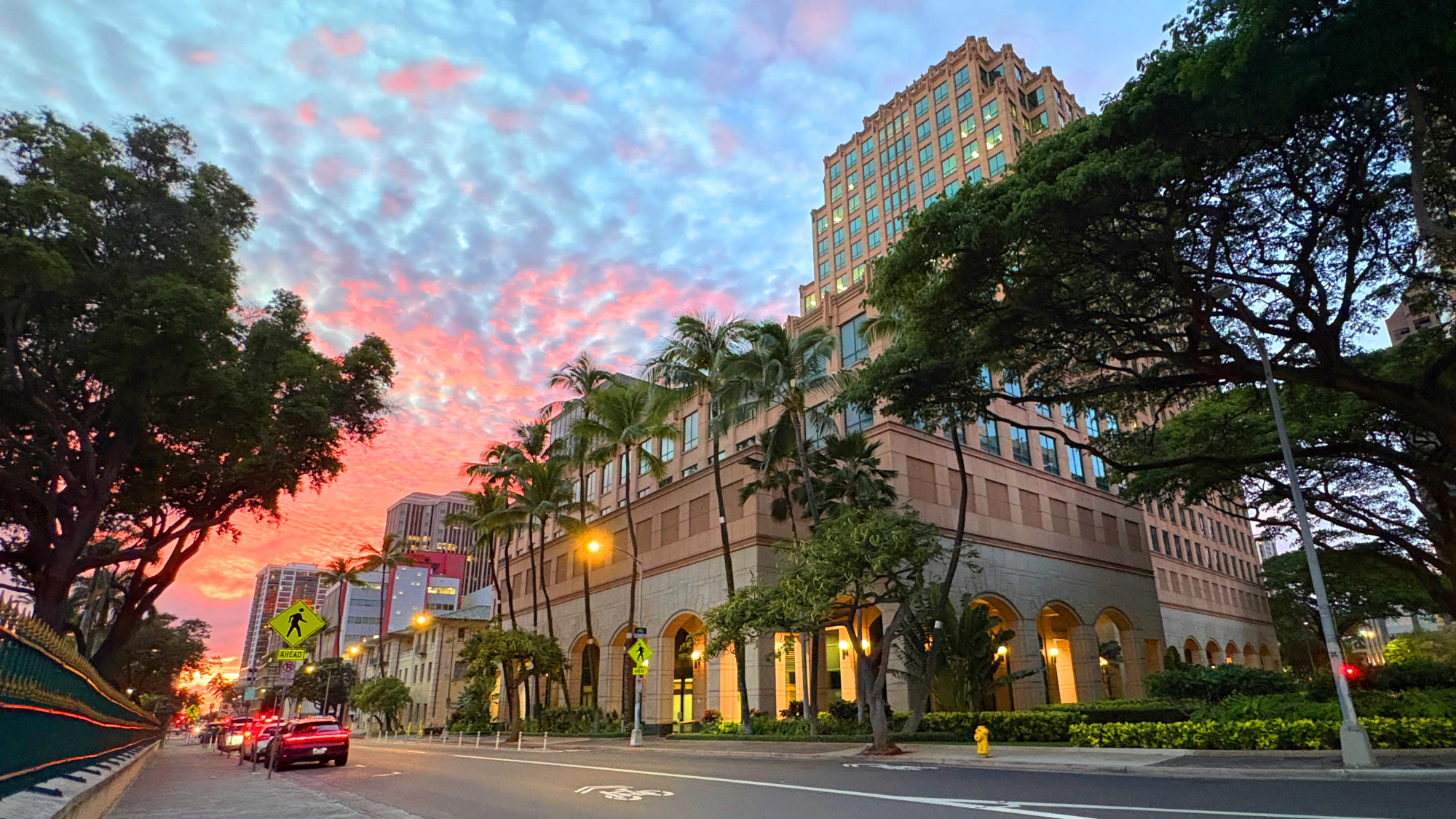I get the impression that local officials have been pretty pleased with their tsunami response, at least at first blush. After all, they worked all night and nothing all that bad happened. Gov. Josh Green even floated his presidential ambitions in the wake the tsunami in an interview with NBC.
They could not have been more lucky that the tsunami fizzled.
Critical information failures
When the tsunami watch graduated to a tsunami warning, I did what anyone might do, I went online to the website for HiEMA, the Hawai‘i Emergency Management Agency, looking for info, and for us, media contacts.
The site was down, and stayed down for an hour or so. That means the tsunami inundation zone maps were unavailable from the official source. I was able to find an alternative site that had archived the maps, after some poking around on the Internet.
Do I even need to say we’re just two years out from mass death by fire in a Lahaina, looking at possible mass death by water and we get ... this? The website is down?
ASD’s Mike Brestovansky reported on that failure on Wednesday. “We are still evaluating what technical complications were involved,” HIEMA spokesman Patrick Daley told him. “That crashing issue is a top priority that we have immediately set out to resolve and are currently working on.”
This isn’t as bad as that time former Gov. David Ige sent a false missile alert, but it’s pretty bad.
There also seemed to be lack of information about where we could be safe, even in an evacuation zone, which probably added to the traffic woes. Our Downtown Honolulu office tower announced to tenants that it was closing, I don’t recall the exact time. Everyone had to leave and the elevators would be shut down. The same was probably true for most towers, we’ve been making calls about that.
In fact, Downtown towers could have stayed open, possibly alleviating some of the traffic congestion. I gave up on getting out of Downtown and my parking structure alone, and snuck back into the office, ignoring the PA announcements to evacuate (yeah, I’m one of those people). As with the hotels on the beach in Waikīkī, I just needed to get to the fourth floor or higher.
Unfortunately, that message wasn’t getting out.
Now, about that traffic ...
Drivers and fliers abandoned
If you’re Gen X kama‘aina or older, you probably remember the 1986 tsunami alert. The alarm went out during a workday, resulting in islandwide gridlock on O‘ahu. We were supposed to learn from that traffic pileup.
Instead, local government would spend the next 40 years screwing over drivers at every opportunity. When the City & County of Honolulu takes a lane and gives it to bicyclists, and that bike lane sits there unused, it’s an annoyance. When that lane is unavailable as possible death barrels our way from Kamchatka, it’s potentially fatal.
Every bike lane stolen from drivers made the situation worse. Same with every lane taken from drivers and turned into bus-only lanes. In Downtown alone we’ve lost lanes each on Alakea and King Street with more takings planned.
The mentality behind these takings has always been that traffic jams are a result of our failure to take the bus, or ride a bike, or walk everywhere. Forty years of government planning has bent toward punishing drivers for driving.
You’d think last Tuesday would’ve been a wake up call. But you’d be wrong.
Department of Transportation Director Ed Sniffen, backed by state Sen. Chris Lee, chair of the Senate Transportation, doubled down, with a callousness beyond belief.
“Mass transit is available. Instead of having your car on the road, catch the bus,” Sniffen told the Honolulu Star-Advertiser. “The city did an amazing job of keeping that transit system running the whole time.”
(Err, no, actually. While busses with passengers continued on their routes, the City stopped taking new riders at 6 p.m., as Civil Beat reported.)
Added Lee, “Cars … can become death traps. That really reinforces the strategy … where much more robust pedestrian, bike and other paths are put in place so people can actually get out of their cars and meaningfully leave.”
More bike and pedestrian lanes probably could help, if we added them as extra capacity to the system, but we don't. We add them by making traffic worse.
Drivers in gridlock at least have one advantage — quite a lot of those jam-packed roads were outside of the inundation zones.
Not so at the airport. Daniel K. Inouye International Airport, which is entirely in an inundation zone — and which was entirely abandoned by the state, according to reporting at Civil Beat. Passengers, some 2,000 in Honolulu alone, reported a facility devoid of authority, instruction or information.
On that topic, Sniffen canceled an interview with Civil Beat. He also punted his answers to our questions to a communications staffer, who gave pretty general responses and avoided naming the names of specific individuals in charge of the state’s response, see that here.
This is all in the rearview mirror for most of us, I know. Close calls are quickly forgotten. But if that earthquake had been any bigger, the wave any stronger, Green wouldn’t have been on NBC speaking lightly about presidential ambitions. He’d be explaining massive property damage and possibly even mass casualties. Nothing happened because nothing happened. But if something had happened, we'd be talking about, "Why didn't we learn anything from Lahaina?"
For the latest news of Hawai‘i, sign up here for our free Daily Edition newsletter!
A. Kam Napier is editor in chief of Aloha State Daily. His opinions in Pipikaula Corner are his own and not reflective of the ASD team. He can be reached at kam@alohastatedaily.com.
A. Kam Napier can be reached at kam@alohastatedaily.com.





